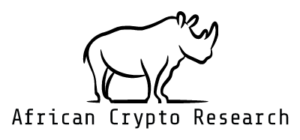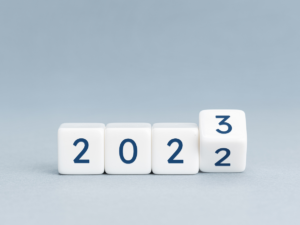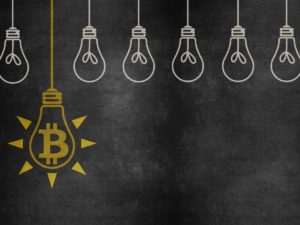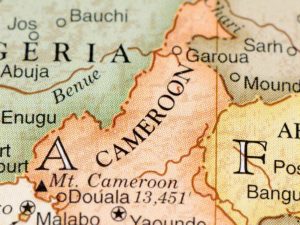Key Points:
- As of 2017, 36% of adults in lower income countries lacked national ID, with Sub-Saharan Africa being the worst affected global region.
- Key drivers of lack of ID are geographic location, gender, income and education level.
- As part of its Digital Transformation Strategy, the AU has identified adoption of digital ID as the best solution to the ID problem.
- Blockchain based digital ID solutions are well suited to meet the AU’s recommendations that digital ID systems should be secure, leave data under user control and be interoperable.
Introduction
The topic of digital identity (digital ID) is incredibly complex, both from a technical and political standpoint. The technical and political issues tend to be intertwined, with key questions that include where digital identity information should be stored, who should get to control it and what it can be used for.
In recent years, a number of technologies have emerged to enable the delivery of digital ID solutions. In this article, we will take a look at how a blockchain-based digital ID system approaches these challenges.
The Issue
The ability to prove who you are with certainty and in a manner recognized by institutions and governments is key to accessing even the most basic services.
Failure to prove who you are means you have limited access to international travel, voter registration, financial services, government assistance and other services that improve well-being.
According to the World Bank, in 2017, 36% of adults in lower income countries (LICs) lacked national ID. When segregated by region, 29% of adults in Sub Saharan Africa (SSA) lacked ID.
This is reflected in the chart below:
Global ID coverage gaps by income group and region (2017)

Source: ID4D-Findex Data (2017), World Bank Group.
When the level of analysis is LICs, note how easy it is to miss how much larger an issue legal identity is in SSA vs. other regions.
Why do some regions lack ID coverage to such a great extent?
17 of the 21 countries identified in the World Bank’s 2017 research as having more than 20% of the adult population that lacks national ID were in SSA. The other 4 non-SSA countries were Laos, Afghanistan, Pakistan and Haiti.
Probability of having an ID in LICs: Differences for Men and Women (2017)

Source: ID4D-Findex Data (2017), World Bank Group.
The World Bank’s study showed that the identification challenge is most concentrated in lower income countries and marginalised groups.
Additionally, whether a person in a LIC has an ID or not is highly influenced by characteristics such as geographic location, gender, income and education.
Approximately one third of the people lacking ID in LICs find it “too difficult” to obtain one and another one third report being unable to produce the necessary documentation to obtain ID.
Are Digital IDs the Solution?
In its Digital Transformation Strategy for Africa (2020-30), the African Union (AU) cites digital ID as an important theme that cuts across many initiatives in the Strategy. In particular, it says:
“By digitalizing ID and in particular using biometrics (fingerprint, iris, facial recognition, etc.) the ability to both positively and uniquely identify individuals becomes a reality in a way that paper-based identification cannot achieve.”
The Strategy also puts forward a set of recommendations for a digital identity system that:
- is secure, inclusive and with the rights and interests of Africa’s citizens at the centre;
- empowers individuals and protects online privacy as a fundamental right;
- ensures digital identity data belongs to and remains in the control of Africans;
- establishes a continental interoperable and open digital identity, allowing validation and authentication of individuals.
Decentralised ID Solutions
The way we maintain ID online today is users have to create an identity for each service they interact with (Microsoft, Google, Facebook etc.).
This forces us to leave large silos of data with these third parties that can be used without user permission or stolen by hackers. Not to mention the cost to service providers to maintain this data.
Decentralised ID is a form of digital ID where users have control over their own identity. With this type of ID, they can decide how their personal information is shared and accessed, enabling trusted interactions while preserving privacy. This sometimes referred to as “self-sovereign digital identity.”
The user’s identity is not stored with a central authority but instead is stored on a blockchain in a container that only the user controls (i.e. its decentralised).
Other organizations, such as banks and governments, can act as “Issuers” and add credentials about the individual to that container. And then the individual decides which of the data in the container to reveal to other parties that request it (“Verifiers”).
Using some blockchain magic, Verifiers can tell if the information came from the Issuer (e.g. the government) or not. Furthermore, Verifiers only hold as much information as needed to identify the Individual’s container, and not everything inside the container.
In addition to being secure and under the user’s control, this approach is advantageous because the user can take their information anywhere so long as the destination has the same standards (interoperability).

Conclusion
When we revisit the African Union’s recommendations for how a digital ID system should look, we see that a blockchain based system, given its emphasis on user control of data, fits the description well.
Examples of projects seeking to deliver decentralised ID solutions in Africa are FlexFinTx and Atala Prism.
FlexFinTx was developed by Zimbabwean entrepreneur Victor Mapunga and is built on top of the Algorand blockchain. In 2021, FlexFinTx was recognised by the World Economic Forum as a Technology Pioneer.
Atala Prism is built on the Cardano blockchain which was developed by IOHK, a blockchain technology company led by American entrepreneur Charles Hoskinson. In 2021, IOHK announced a deal with the Ethiopian government that’ll see 5 million Ethiopian students onboarded onto Atala Prism.
For more on this topic, it’s worth checking out Victor Mapunga’s presentation at the 2020 Blockchain Africa Conference:






